Teddy Hall at Christmas
7 Dec 2021|Emma Carter
- Library, Arts & Archives
In honour of the festive season, we have curated a display in the Old Library using books, archive materials and highlights from the Hall’s own picture collection. Find some of them reproduced here, interwoven with fun facts about the History of Christmas. Merry Christmas from all the Library and Archive team.
History of Christmas Cards
People have been sending Christmas greetings to each other for hundreds of years. The first recorded use of ‘Merry Christmas’ was in a Christmas letter sent in 1534.
The custom of sending Christmas cards, as we know them today, was started in the UK in 1843 by Sir Henry Cole. He was a senior civil servant who helped set-up the new ‘Public Record Office’ (now called the Post Office) and wondered how it could be used more by ordinary people.
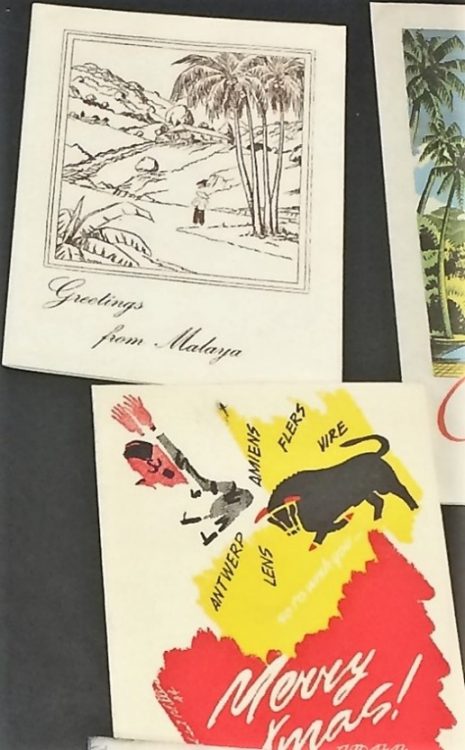
Cards from the Archives
Principal A B Emden was an avid collector of personal items, and among his papers is an entire box full of Christmas cards sent by Aularians during the Second World War.
These cards have been sent from all over the world from Malaya, the Middle East and even from H.M.S. Satellite, a naval ship in the middle of the ocean. Some have rather fun designs such as the bull charging Hitler, or the three wise men being guided by a shining Intelligence Corps crest. It is heart-warming to see Emden remembered in the Christmas wishes of soldiers deep in military conflict, and the rallying cry ‘Floreat Aula’ in many of the cards highlights the affection and pride these brave people held for our college.
History of Christmas Carols
Carols were first sung in Europe thousands of years ago, but not for Christmas. Pagan songs were sung at the winter solstice before Christianity became the dominant religion and the lyrics took on more religious meanings. Early Christmas carols were written in Latin and were therefore inaccessible to the common people, until 1223 when St. Francis of Assisi started directing Nativity Plays in Italy. The people in the plays sang ‘canticles’ that told the story in a language that the audience could understand and let them join in!
Traveling singers or Minstrels took these songs on tour and changed lyrics frequently to suit the local people. This is why we cannot be sure whether carols known by their geographical names, such as Worcestershire Carol (SEH Shelfmark G.6.9(7)), truly originated in that place.
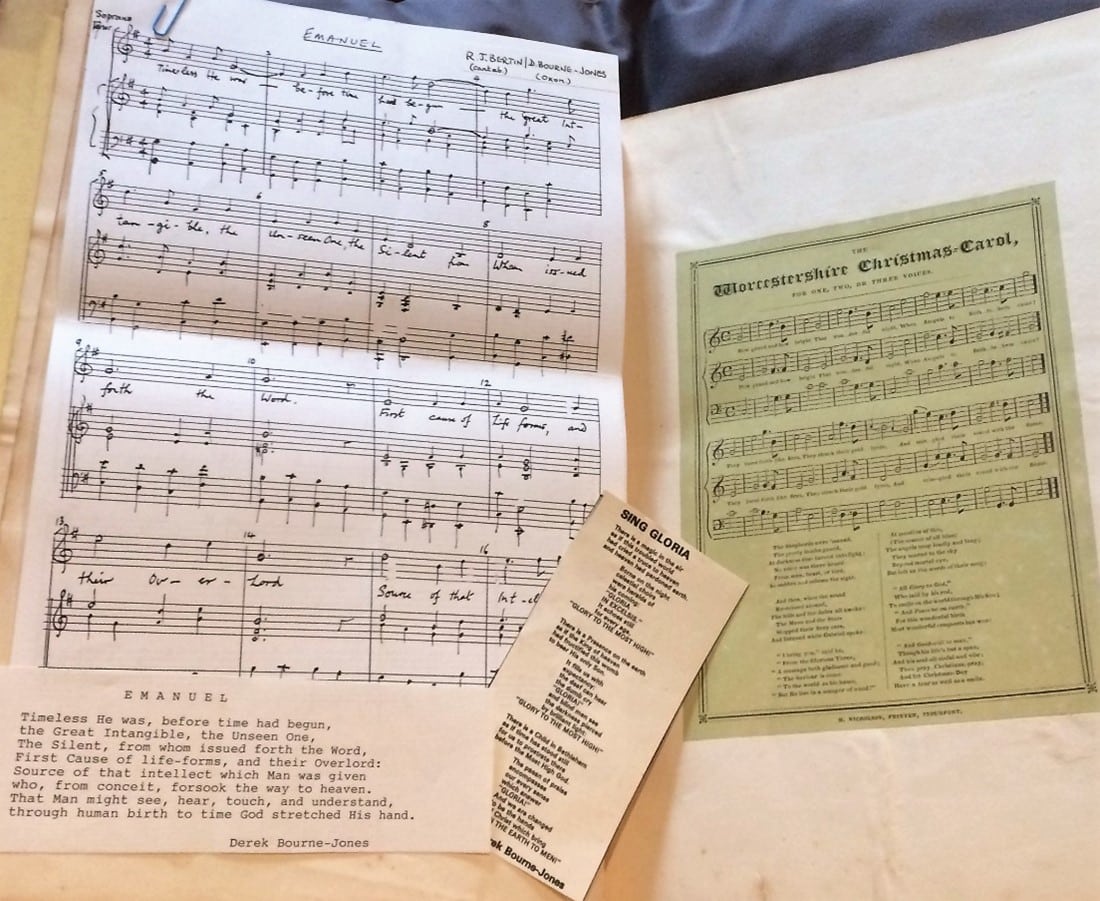
From 19th Century, poetry with Christmas themes were often repackaged with music to create carols such as Christina Rossetti’s popular ‘In the Bleak Midwinter’ (1872). The two carols on display here were written by the Aularian and poet Derek Bourne-Jones (1951) specifically for the use of the Hall. (SEH/BOU Historic Pamphlet A-B 33)
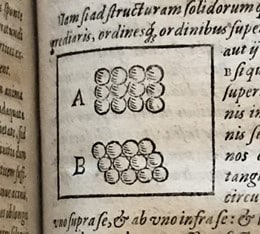
Snowflakes
Ioannis Kepleris C. Maiest. mathematici strena seu De niue sexangula. (Anno M. DC. XI [1611]) SEH Shelfmark 4° G 18(6)
This is the first scientific publication to interrogate the shape of snowflakes.
Johannes Kepler (1571-1630), Imperial Mathematician at the court of the Holy Roman Emperor Rudolf I in Prague, ruminates on the curious uniformity of their six-sided formation. He playfully conjectures that they must be formed as such to optimise their tessellation, like honeycomb? Or, perhaps there is some quality in the water that causes them to freeze in their signature hexagonal shape? Most importantly, he identifies a link between the shape of snowflakes and other crystalline formations such as hexagonal rock formations.
Hooke, Robert Micrographia: or Some physiological descriptions of minute bodies made by magnifying glasses (London, 1665) SEH Shelfmark Fol. G 17
Kepler’s representation of crystalline structures as close-packed arrangements of spheres is almost directly reproduced by Robert Hooke (1635-1703) in his Micrographia (1655). Hooke further investigates how such arrangements could explain the various shapes of crystals. By combining his scientific curiosity with his artistic prowess he published this book of illustrations, focussing on the intricate detail of snowflakes under his microscope, and the freezing patterns of his own urine on cold mornings.
Why is Christmas Celebrated on December 25th?
There has been a lot of speculation over the centuries as to the true birth day of baby Jesus.
There was an ancient Jewish idea that prophets die on their birthday. During the 3rd century AD, theologists Tertullian and Hippolytus dated Jesus’s crucifixion to 25th March, since it happened around Passover. However, Sextus Julius Africanus declared his belief that this signified the date of conception rather than birth, and thus his birth dates to 9 months later – 25th December.
Forensic interrogation of the biblical text also leads to this date. The angel Gabriel appeared to Mary in her cousin Elizabeth’s 6th month of pregnancy with John the Baptist (born 24th June). This suggests Jesus would have been conceived around 24th March, and credibly born in a stable in the early hours of 25th December.
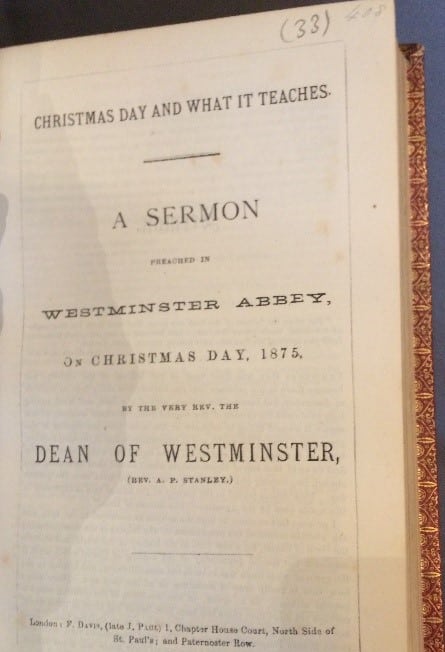
The Meaning of Christmas
In his sermon preached on Christmas Day in 1875, Arthur Penryn Stanley (1815-1881), Dean of Westminster, suggests December was a more deliberate choice by early Christians. Many religious and cultural festivals fall at this time of year around the world including Jewish Hanukkah, Scandinavian Yule, Eastern European Koleda, and the Pagan Saturnalia. Many of these are centred around the winter solstice, which celebrates the triumph of the Sun over darkness and New Year beginning. It has been suggested that Early Christians deliberately appropriated the date and customs of these festivals in order to persuade more people to follow their teachings.
However, Dean Stanley argues that it was a conscious choice by ‘East and West’ to celebrate together ‘the turning of the great moral year’ alongside the turning of the natural one. Much like the allegory of the solstice, the baby Jesus represents a ‘remedy [to] the infidelity, the corruption, the impurity and the misery of’ the past and celebrates a new beginning under which we can all strive to emulate the ‘goodness and truthfulness’ of the innocent newborn in whose coming ‘was revealed to man a new image of the divine nature’.
Stanley, Arthur Penryn Christmas Day and what it teaches: a sermon preached in Westminster Abbey, on Christmas Day, 1875 SEH Shelfmark KK.29(33)
Wintry Paintings
Irving Lehmann (1900-1982), First Snow. Purchased by the Picture Fund in the early 1950s. Irving George Lehmann was born in Kiev, Russia. He moved to Brooklyn, New York and painted and exhibited widely.
Alexandra Troubetzkoy (1910-1994), Front Quad in Snow (1966). Given to Principal Kelly by the artist. The artist was born a princess in Czarist Russia. Her great uncle was Paul Troubetzkoy, a well known sculptor. She studied art at the Ruskin School, and this is her connection to the Hall.
The first known reference to Santa’s North Pole residence is in an 1866 cartoon from Harper’s Weekly by Thomas Nast, which features a small inscription along the circular border that reads Santa Claussville, N.P. (circled in red).
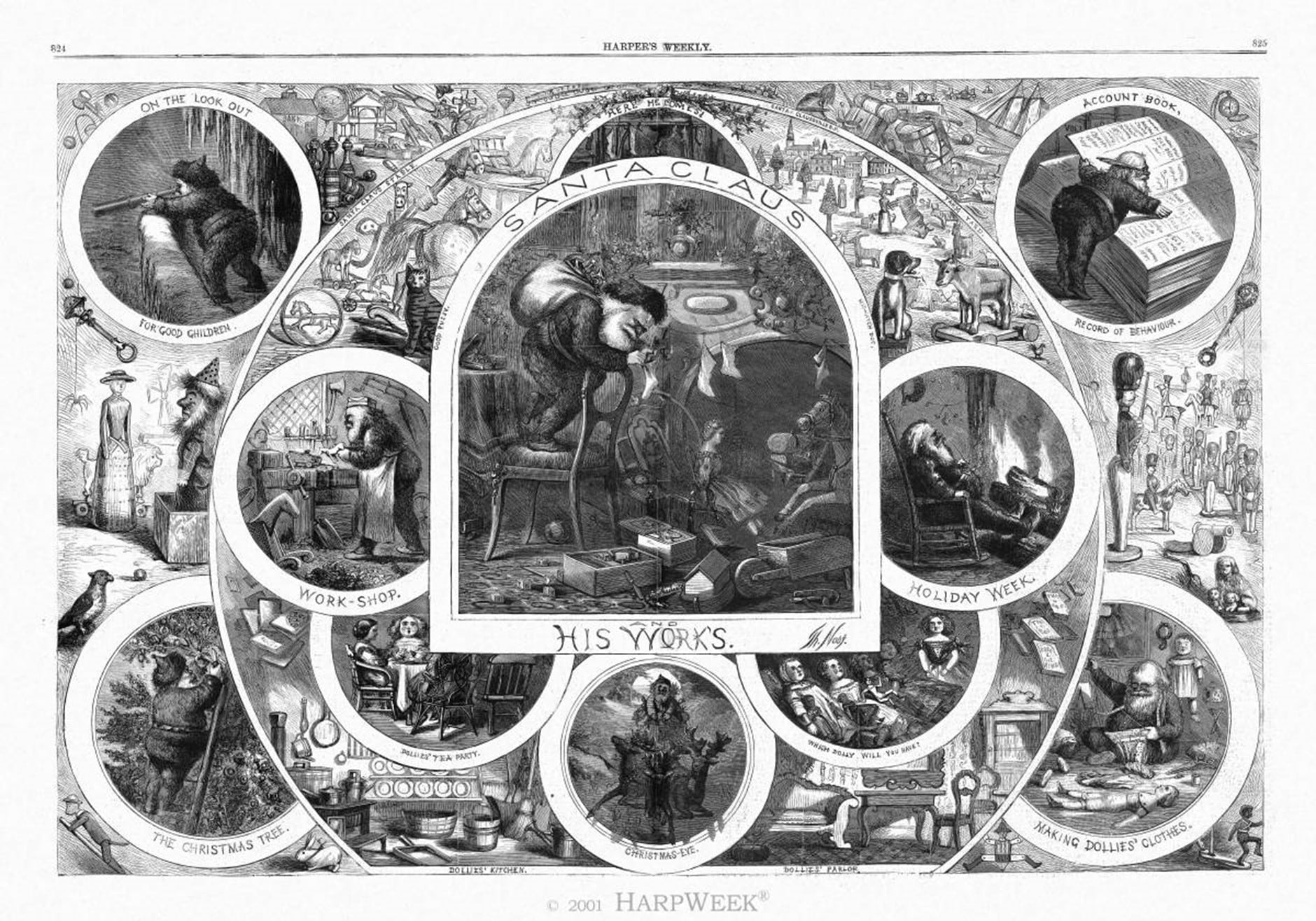
It is unclear whether it was Nast himself who identified the North Pole as Santa’s residence, but there are many contributing factors which make it a logical choice.
Santa Claus was already widely associated with snow because most of the publishing companies producing Christmas cards and other content were based in the UK and New England, where it snows around the festive season. Also, as mentioned below, he had long been accepted as an avid reindeer guardian, animals which originate from northern, snowy regions.
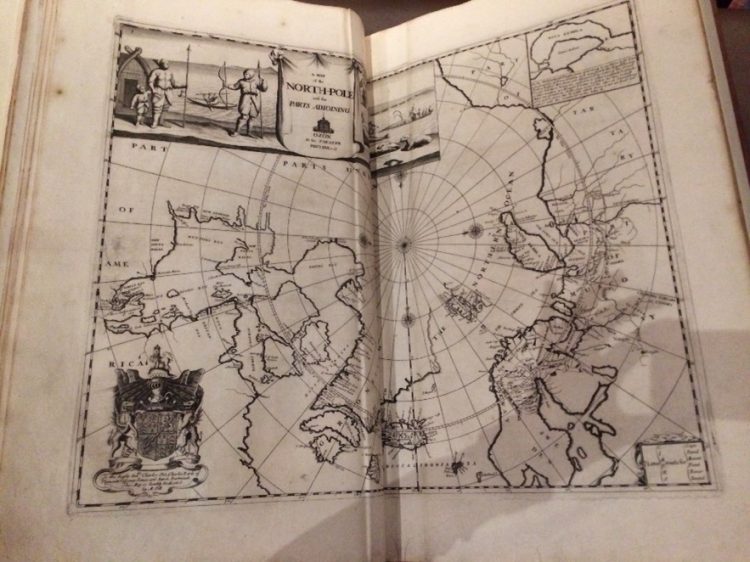
The North Pole at this time had a wild and mysterious reputation, still largely unexplored and famous for the highly publicized, but often ill-fated, expedition attempts during 1840’s-50’s. Indeed, the first explorers would not conquer the North Pole until 1909 (Frederick Cooke and Robert Peary both claim this title). These beautiful maps from The English Atlas (1680, SEH Shelfmark LL.15 v.1) and John Franklin’s Narrative of a Journey to the Shores of the Polar Sea (1823, SEH Shelfmark 651) shows an excellent attempt at charting the region, but large sections are still missing or labelled ‘Parts Unknown’.
This makes a perfect base for Santa to set up a workshop! As the Pole was unoccupied, he and his elves could toil the year away without interference from prying eyes; and, because it was unclaimed territory, Santa could remain the secular symbol of benevolence for every nation worldwide.
Reindeer
Wood, William Zoography; or, The beauties of nature displayed. Vol.1 (London: Printed for Cadell and Davies, by Richard Taylor and Co.), 1807 SEH Shelfmark 667
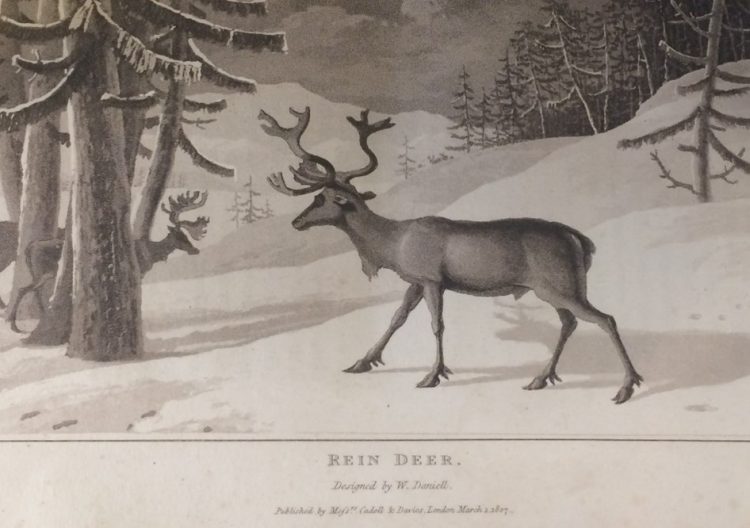
William Wood FRS, FLS (1774-1857) originally trained as a surgeon at St Bartholomew’s Hospital. He turned to the study of natural history with a particular interest in sea shells, for which he remains famous. Eventually, he became a leading natural history bookseller.
His Zoography is important for the black and white aquatints by William Daniell (1769-1837), one of the most notable English landscape artists of his day. The subjects are renowned for their realism and are placed against exotic scenery reflecting their origin, for example this ‘Rein Deer’ set against a lovely wintry backdrop.
It was Clement Clarke Moore’s 1823 Poem ‘The Night Before Christmas (A Visit from St. Nicholas)’ which popularised reindeer as the guides of Father Christmas’ sleigh.
However, for centuries reindeer have been associated with Christmas and winter festivities, particularly in Scandinavia and across Eastern Europe. When Pagans converted to Christianity in the Middle Ages, their ancient customs became a part of Christmas celebrations. The reindeer symbolises creativity, resourcefulness and knowledge, whilst also representing safe journeying and endurance through travels. The idea that reindeer brought people safely home over a harsh winter landscape is likely to have inspired the popular story of Father Christmas.
When, what to my wondering eyes should appear,
But a miniature sleigh, and eight tiny reindeer,
With a little old driver, so lively and quick,
I knew in a moment it must be St. Nick.
More rapid than eagles his coursers they came,
And he whistled, and shouted, and called them by name;
“Now, DASHER! now, DANCER! now, PRANCER and VIXEN!
On, COMET! on CUPID! on, DONDER and BLITZEN!
Moore, Clement Clarke. The Night before Christmas (a Visit from St. Nicholas). MLA 8th Edition, Generic NL Freebook Publisher, 1998
Category: Library, Arts & Archives
